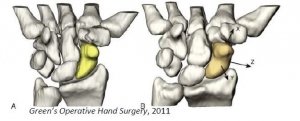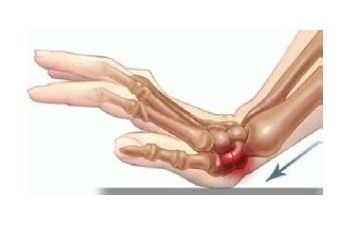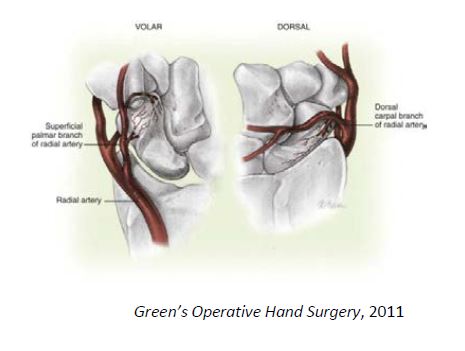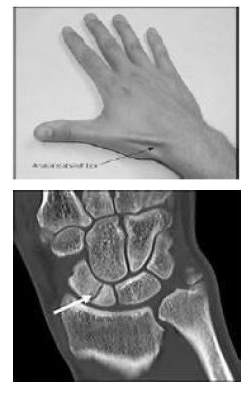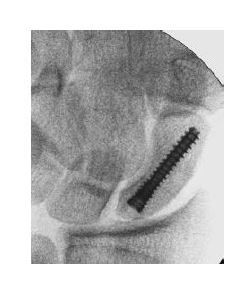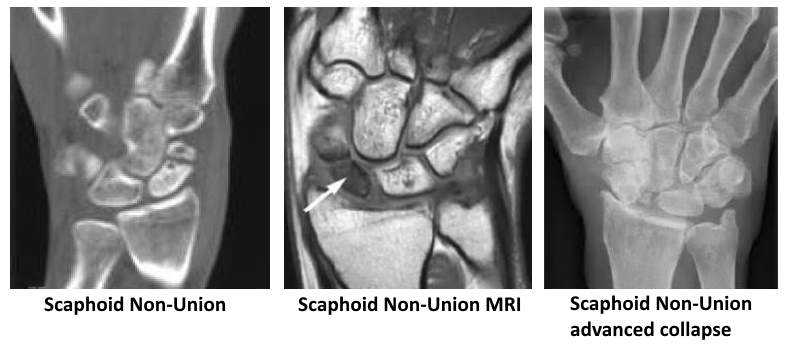Scaphoid Fracture
What is the scaphoid?
The scaphoid is the most commonly injured/fractured carpal bone. We have 8 carpal bones set in 2 rows. The scaphoid ‘bridges’ both rows of bones. For this reason, it is commonly fractured with a fall.
Who gets a scaphoid fracture
Most scaphoid fractures occur in males with an average age of 25. 61% occur in a sporting event. In addition, due to the nature of those injured, they often present late, with an unhealed fracture.
Why is a scaphoid fracture so difficult to treat?
First, a scaphoid can have a non-displaced fracture that does not show up on routine x-rays. The bone is in the shape of a twisted peanut. This may lull patients into a false sense of security thinking the bone isn’t broken because initial x-rays were read as ‘normal’. A non-displaced fracture can move into a displaced fracture easily if not immobilized.
Second, the blood supply to the scaphoid comes in from distal or from the hand side. Most of the bone is covered by cartilage. This means the blood supply comes through the bone, not into the bone. If the bone is broken, the blood supply is disrupted—this can cause the bone not to heal and possibly die.
How do we diagnose and treat a scaphoid fracture?
A high index of suspicion is needed when treated carpal bone fractures. Pain in the “snuff box” or the depression over the wrist on the thumb side is key. Routine X- rays are taken. If pain is present and radiographs are normal, a splint is worn for two weeks. MRI is very sensitive for picking up scaphoid fractures and is used when casting is a problem.
Almost all scaphoid fractures will need a CT scan to delineate the fracture pattern and displacement. CT scan is also the best method to monitor healing. This is difficult in today’s insurance pre-authorization driven environment
How do we treat scaphoid fractures?
Non-displaced fractures can be treated in a cast. This means less than 1mm of a ‘step -off’ or gap at the fracture site. These are usually found in younger children. Any complete fracture will need operative fixation. This is done in minimally displaced fractures with a screw. Sometimes bone grafting is needed because the fracture is comminuted or in multiple pieces.
How long does it take a scaphoid to heal
A long time. Average time to healing is 3-4 months. Non-displaced scaphoid fractures treated with a screw could go back to work at 11 weeks on average in a large study performed in the Navy.
Those treated with casting took 1-2 weeks longer.
What is a scaphoid non-union
When a scaphoid is not treated or has failed treatment the bone may not heal. The lack of blood supply combined with motion at the fracture site keep the bone from healing. Scaphoid nonunions are particularly hard to heal. A myriad of treatments is available to treat these. The goal of surgical treatment is to prevent arthritis. Results of scaphoid non-union surgery are inferior to acute surgery, hence the push to evaluate wrist pain early after injury.

